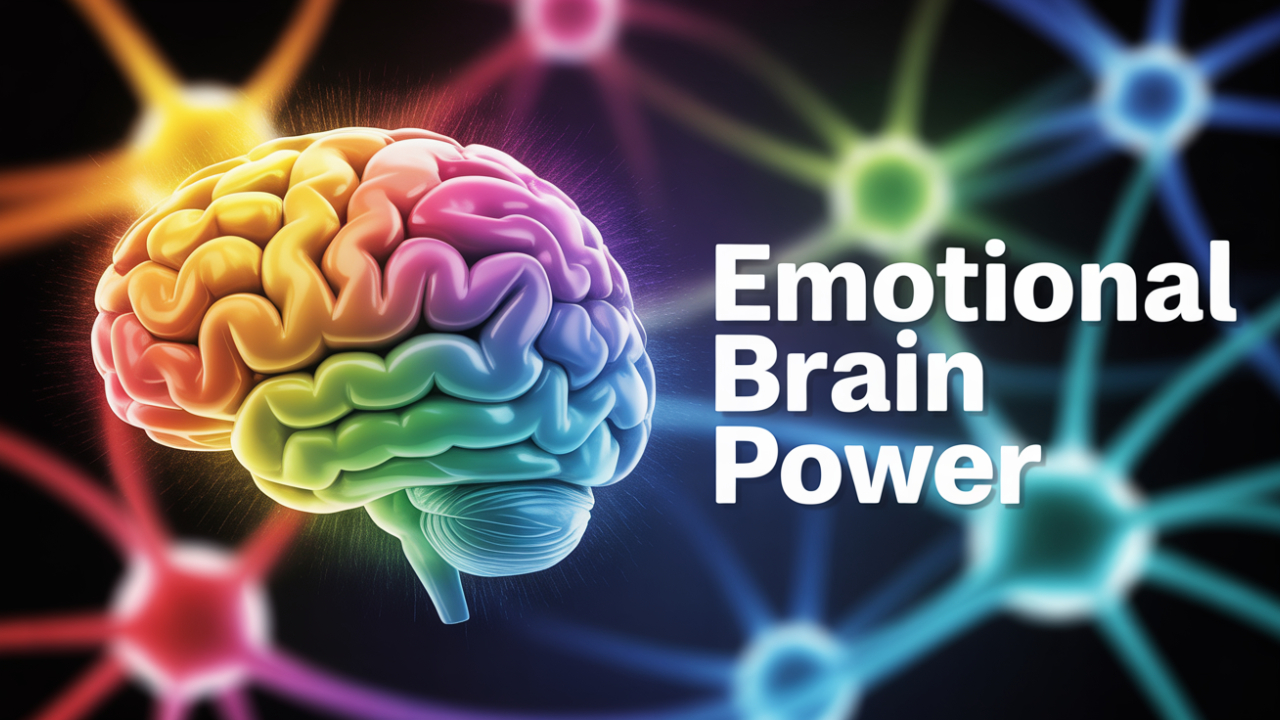You probably think your thoughts are your own private world. A secret, silent monologue no one else can hear. But what if I told you that this private world isn’t so private after all? What if, with every single thought—positive or negative—you are sending out subtle cues that are secretly shaping how your family, friends, and even strangers treat you? What if the respect you feel you’re not getting at work, or the distance you feel from a loved one, are being influenced by an invisible dynamic that you, yourself, are generating every second of every day?
This isn’t about magical thinking. This is about the hidden mechanics of human interaction. Recent discoveries in neuroscience and psychology are revealing a truth that is both empowering and a little terrifying: your internal state is a silent director, and for most of your life, you’ve had no idea you were the one in charge. We are all, in a sense, unconsciously shaping each other’s behaviors with every single interaction.
You’re about to discover that what happens *inside* your head has a direct and measurable influence on the world *outside* of it. You’re about to learn how to go from being a character in the play to becoming the director.
This book is scientific documentary of the Kingdom of God.
Have you ever felt completely stuck? Like you’re trapped in a recurring loop? Maybe it’s a pattern in your relationships—you keep attracting partners who are emotionally unavailable, or you constantly find yourself in friendships where you feel taken for granted. Maybe it’s at work, where you see colleagues with less experience get the promotions you deserve, and you feel perpetually overlooked, no matter how hard you work. You have the difficult conversations, you try to set boundaries, you change your approach on the surface, but the underlying dynamic never seems to shift. It’s like being in a play where everyone has a script but you, and you can’t figure out why they all seem to treat you the same way.
The frustration is maddening because you know you’re capable of more. You know you deserve better. You feel this immense potential locked inside you, but an invisible barrier seems to stand in your way at every turn. You are not imagining it. That barrier is real. But it’s not outside of you. It’s not your boss, your partner, or your friends. The barrier is a constant stream of unconscious signals being sent out from the deepest parts of your mind. Your thoughts, the very things you believe are private, are the source of these signals, and they are shaping your reality by influencing the people around you in ways they don’t even realize.
**The Problem: The Invisible Prison**
We live our lives believing we are reacting to the world. We think, “My boss disrespected me, *so* I feel angry.” “My partner was distant, *so* I feel insecure.” We perceive ourselves as being at the mercy of external events and other people’s behavior. This belief system, where we are the effect and the world is the cause, is one of the most disempowering prisons a person can live in. It can make us feel helpless, like a victim of circumstance, forever waiting for the world to change before we can feel good.
But the new science of interpersonal neurobiology is flipping this model on its head. It reveals that, more often than not, we are the cause, and the world is the effect. The people in our lives are often not just acting, but *reacting*. They are reacting to the subtle, invisible cues we are constantly sending them. These cues aren’t in our words, but in our posture, our micro-expressions, and the almost imperceptible quality of our emotional state. And all of it originates from one place: our dominant, habitual thought patterns.
Think about it. Your thoughts are physical, electrochemical events in your brain. Each thought can trigger a cascade of neurotransmitters—chemicals like cortisol, the stress hormone, or serotonin and dopamine, the “feel-good” chemicals. If your mind is a constant loop of worry, your body is marinating in a low-grade bath of cortisol. If you are habitually replaying arguments, you might be living in a state of chronic fight-or-flight.
You might think you’re hiding it well. You put on a smile, you say the right things. But you can’t always hide the tension. Humans are exquisitely sensitive to the emotional states of others. We have an innate ability to connect and synchronize on a subconscious level, a process that happens long before a single word is spoken. Your constant, low-level stress doesn’t just stay inside you; it leaks out. It can become a palpable tension that your coworkers feel. Your deep-seated belief that you are “unlovable” doesn’t remain your secret; it can be broadcasted as a subtle defensiveness that your partner feels and pulls away from.
This is the invisible prison. You are trapped not by the world, but by the unconscious signals you are sending to the world, which then cause the world to reflect your deepest beliefs back to you. It’s a perfect, self-perpetuating feedback loop. And because it’s all happening subconsciously, on both sides, everyone involved is convinced that this is “just the way things are.” But they aren’t. And today, you’re getting the keys to unlock the cell.
**Transition: The Shift from Puppet to Puppeteer**
Realizing you’ve been an architect of your own struggles can be a bitter pill to swallow. But it is also the single most empowering realization you will ever have. Because if you created these patterns unconsciously, you can now begin to recreate them *consciously*. If your thoughts have been the invisible strings guiding people in your life into certain roles, you can now learn to guide those strings deliberately.
This is where we move from the problem into the solution. This is where you stop being the puppet and start becoming the puppeteer. This power doesn’t come from learning to manipulate others. It comes from learning to master yourself. It’s not about controlling what other people do; it’s about consciously choosing the signals you send, and then allowing them to respond to this new, more empowered version of you. The change has to start from within.
We’re going to break down the three hidden secrets of this invisible influence. These are not just theories; they are observable, scientifically-backed mechanisms that govern human interaction. By understanding these three secrets, you will finally see the invisible architecture of your relationships and your life, and you will be handed the tools to become its conscious designer.
**Section 1: The First Secret – The Reality Filter Effect**
The first secret is the foundation of it all. Let’s call it The Reality Filter Effect. The core principle is this: You don’t see the world as it is; you see the world as *you* are. Your mindset, your dominant beliefs, and your habitual thoughts create a powerful filter that completely changes what your brain chooses to perceive. Your mind is not a passive observer; it’s an active participant in creating your reality.
The simplest analogy for this is the “Red Car Phenomenon.” Have you ever decided you want to buy a specific car, let’s say a red Jeep? You do the research, you look at pictures, and you get the idea lodged in your mind. Suddenly, you see red Jeeps everywhere. It feels like there’s been an explosion in the number of red Jeeps in your city overnight.
But of course, the number of red Jeeps didn’t change. What changed was *you*. You gave your brain a new target. Before, they were just background noise. Now, your brain’s filtering system is actively seeking them out.
This filtering mechanism is a real neurological process. It’s managed in part by a network of neurons in the brainstem called the Reticular Activating System, or RAS. The RAS acts as a gatekeeper for the billions of bits of information hitting your senses every second. It has to decide what’s important enough to let through to your conscious mind and what gets ignored; otherwise, you’d be completely overwhelmed. And how does it decide what’s important? It learns from your focus—your dominant thoughts, fears, and beliefs.
Now, apply this to the people in your life. This is where it gets profound. If you hold a deep, subconscious belief that “people can’t be trusted,” your brain gets a clear directive: “Find evidence of untrustworthiness.” As you go about your day, your brain will scan for any sign that confirms this belief. When a coworker glances at their watch while you’re talking, your untrustworthy-filter might interpret it not as them being late for a meeting, but as them being dismissive. When a friend forgets to call back, your filter won’t just consider that they got busy; it will flag it as proof that they are unreliable. Your brain will literally overlook any evidence to the contrary because it doesn’t match the filtering instructions.
But it doesn’t stop there. This filter doesn’t just change your perception; it changes your *behavior*. Because you *perceive* untrustworthiness, your body language changes. Your tone becomes guarded. The other person, who may have started with a neutral mindset, now feels this guarded, suspicious energy. So how do they react? They become more cautious. They pull back. And then you see their reaction and say, “Aha! I knew it! People can’t be trusted.” You’ve created a self-fulfilling prophecy, all orchestrated by your own internal filter.
Now, imagine flipping the switch. What if your core belief was, “People are inherently good and doing the best they can”? Your RAS would get a new set of instructions. A friend who didn’t call back? “They must be swamped. I’ll send them a text to let them know I’m thinking of them.” With this new filter, your behavior changes. Your body language is open. You radiate trust. How will people respond to that? They’ll feel safer and open up more. Research shows that prioritizing positivity leads to higher quality social bonds and greater well-being, because it builds psychological resources like resilience and self-compassion.
The world didn’t change. The people didn’t change. Your *filter* changed, and in doing so, you changed the reality you experienced.
**Actionable Exercise: The Gratitude Filter Challenge**
This isn’t just a concept; it’s a tool you can use right now. For the next 24 hours, try this experiment. I call it the Gratitude Filter Challenge. Pick one positive quality. Just one. It could be “competence,” “kindness,” or “passion.”
Your only job for the next 24 hours is to actively hunt for that quality in every single person you interact with. The barista, your boss, your partner. Your mission is to find evidence of their competence, kindness, or passion. Genuinely look for it. When you find it, do two things. First, mentally acknowledge it: “There it is. That was a moment of real competence.” Second, if it feels right, voice it. A simple, “Wow, you handle that system really well,” or “I really appreciate how kindly you spoke to that person.”
At the end of the 24 hours, take a minute to reflect. How did it feel to actively look for the good? Did you notice things you normally would have missed? And most importantly, how did people react to you? You might be shocked to find that the world around you transforms when you simply change the lens you’re looking through.
**Section 2: The Second Secret – The Emotional Echo**
If the first secret was about how you perceive the world, the second is about how the world perceives *you*. Let’s call it The Emotional Echo. The core concept is this: Your internal emotional state is not just a private experience. It radiates from you through your body language, your tone of voice, and other nonverbal cues, and it’s unconsciously picked up by everyone around you, who then may begin to resonate with that same state. In a way, you are capable of infecting people with your mood all day long.
Think about the last time you walked into a room where two people had just had a silent, tense argument. You couldn’t hear the tension, could you? But you could *feel* it. The air feels thick. That’s a raw, powerful example of what scientists call emotional contagion. And it is happening, in much more subtle ways, in every interaction you have. It’s as if your nervous system is like a tuning fork. When you hold a vibrating tuning fork next to another, the second one will start to vibrate at the same frequency without ever touching. Humans can do the same thing emotionally.
This phenomenon is rooted in our biology. Our brains have “mirror neurons.” These are brain cells that fire not only when we perform an action, but also when we *observe* someone else performing that action. If you see someone smile, the mirror neurons in your brain associated with smiling fire up, creating a faint echo of that feeling in you. This system is a neurological basis for empathy and connection. It’s an automatic, subconscious process that helps us sync up.
Here’s the crucial part: When you walk around in a state of chronic, low-level anxiety, your tense posture and shallow breathing are observed by the subconscious minds of people around you. Their mirror neurons pick up on your distress, and it can put them on edge, too. Even if you’re talking about something neutral, there’s an underlying broadcast of “I am not safe,” which can make *them* feel unsafe. Experimental evidence has shown that emotions can be transferred to others even without any direct interaction or nonverbal cues, such as through text-based posts on social media.
This has a monumental impact. In the workplace, a leader who is stressed and irritable can, through emotional contagion, spread that state throughout the team. Creativity plummets and communication breaks down. Conversely, a leader who models a calm, resilient attitude can create a ripple effect of psychological safety that boosts morale and enhances productivity. Positive social interactions can influence mood and create an environment where people feel better and are better at problem-solving.
In your personal relationships, this is even more powerful. Imagine you come home after a hard day, feeling unappreciated. You don’t say anything, but your partner feels the echo of your emotional state. In response, they might become distant or defensive. You then see their distance and think, “See? They don’t care,” which validates your initial resentment. This is how couples can create downward spirals of negativity, with each person reacting to the other’s emotional echo.
When you actively cultivate a state of gratitude or peace within yourself, you become a source of that emotional state. You walk into a room, and your calm presence can de-escalate tension. This isn’t about ignoring problems. It’s about taking radical responsibility for your own internal state, knowing that you are setting the emotional tone for everyone around you. You are the tuning fork. What emotional state are you choosing to broadcast?
**Actionable Exercise: The Emotional Audit & Broadcast**
This exercise will train you to become a conscious emotional broadcaster. Three times today—morning, midday, and evening—set an alarm. When it goes off, pause and conduct a two-minute Emotional Audit.
First, close your eyes and ask yourself: “What is my dominant emotional state right now?” Don’t judge it. Just name it. Is it anxiety? Frustration? Calm?
Second, consciously choose the emotional state you *want* to broadcast for the next ten minutes. Pick something that feels a little better. If you’re anxious, maybe you’ll choose “calm.” If you’re frustrated, try for “patience.”
Third, for the next ten minutes, do everything you can to embody that chosen emotion. This is the “Broadcast” phase. Change your physiology. If you chose “calm,” consciously slow your breathing. Relax your shoulders. If you chose “gratitude,” put a slight smile on your face and think of three things you’re grateful for. Carry yourself as if you are already feeling that way.
Pay close attention to what happens in your interactions during those ten minutes. You are changing your emotional echo on purpose. This practice, over time, breaks the cycle of unconscious reaction and puts you in the driver’s seat.
If you’re already feeling a shift just by understanding these first two secrets, then you need to be here for what’s coming next. The third secret is the master key. It’s one of the most direct techniques for shaping how people respond to you, and it ties everything we’ve talked about together.
**Section 3: The Third Secret – The Expectation Blueprint**
We’ve covered your internal filter and your emotional broadcast. Now we arrive at the third and most powerful secret: The Expectation Blueprint. The principle is as simple as it is world-changing: You don’t get what you want from people; you often get what you *expect* from them. Your deeply held expectations of others act as an invisible blueprint, a subconscious script that you hand to them, and very often, they will read their lines.
This phenomenon has a name: the Pygmalion Effect, or the Rosenthal Effect. It comes from a landmark study in psychology. In the 1960s, researchers Robert Rosenthal and Lenore Jacobson went into an elementary school and gave students an IQ test. They then randomly selected 20% of the students and told their teachers that these specific students were “intellectual bloomers” poised for remarkable academic growth.
The teachers, believing they had gifted students, changed their behavior toward them—subtly and unconsciously. They gave these students more attention, more encouragement, and more challenging work. They held a higher expectation. And what happened? At the end of the year, that randomly selected 20% showed significantly higher IQ gains than their peers. The teachers’ expectations became a self-fulfilling prophecy. The other side is also true, where low expectations can lead to poor performance.
This is happening in your life every day. Let’s look at the workplace. A manager who believes an employee is a superstar will give them more high-profile projects and more mentorship. The employee, feeling this trust, becomes more confident and rises to meet the high expectation. Now consider a manager who secretly believes an employee is “average.” They will unconsciously give that employee less challenging work and fewer opportunities. The employee, feeling this lack of belief, may become disengaged. Their performance stagnates, and the manager says, “See? I was right. They’re just average.” Both managers helped create the very employee they expected to see.
This is even more potent in our personal relationships. If you expect your partner is supportive, you’ll act in ways that pull for that behavior. You will be more vulnerable and open. This trust can inspire your partner to be more supportive. But if you expect them to be selfish, you may approach them with defensiveness, using accusatory language like, “You probably won’t want to help me, but…” You are handing them a script where they are the villain. Faced with that, their natural response might be to pull away, fulfilling your negative expectation.
You must understand this: People often rise, or fall, to the level of the expectation you hold for them. Your expectation is a blueprint, and your words, body language, and energy are the tools that build that reality. Are you handing people blueprints for magnificent castles or for dilapidated shacks?
The most liberating part is that you are in control of the blueprints you create. This isn’t about being naive or ignoring red flags. It’s about consciously choosing to hold a vision of someone’s highest potential and interacting with them from that space.
**Actionable Exercise: Rewriting the Script**
This final exercise is the most transformative of all. I want you to pick one important relationship in your life where the dynamic feels stuck. It could be with a spouse, a parent, or a boss.
First, take out a piece of paper and be brutally honest. At the top, write “The Old Blueprint.” Now, list your current, negative expectations for this person. For example: “I expect them to not listen.” “I expect them to criticize my decisions.” “I expect them to let me down.” This is the unconscious blueprint you’ve been using.
Now, take a fresh piece of paper. At the top, write “The New Blueprint.” This is where you become a conscious creator. Write a new list of positive, empowering expectations. This is not what they *are* now, but what you are *choosing to expect*. For example: “I expect them to listen with an open heart.” “I expect them to respect my competence.” “I expect them to be a source of support.” Write the blueprint for the person you want them to be.
For the next seven days, your task is to operate from this New Blueprint. Before you interact with this person, take 30 seconds to read the new list. Anchor yourself in that new expectation. During your interaction, your only job is to look for any piece of evidence, no matter how small, that the New Blueprint is true. If you expect them to listen, and they listen for just ten seconds before interrupting, your job is to focus on the ten seconds of listening.
When you see this positive evidence, acknowledge it. “Thank you for listening, I appreciate that.” You are watering the seeds of the behavior you want to see grow. You are changing the environment you create *around* them. By changing your expectations, you change your behavior, which changes the script. You give them a new, more empowered role to play. You may be astonished at how eagerly people step into the higher versions of themselves that you expect them to be.
**Conclusion & Wrap-Up**
We’ve journeyed into the invisible world of the mind and pulled back the curtain on the forces that have been shaping your life. We have seen that your thoughts are never just thoughts. They are the architects of your perception, the source of your emotional state, and the authors of the blueprints you hand to everyone you meet.
We’ve uncovered the Three Secrets. The Reality Filter Effect, which shows that you find what you focus on. The Emotional Echo, which proves your internal state sets the emotional tone for those around you. And The Expectation Blueprint, the powerful truth that people will often become what you expect them to be.
The common thread is that the power to change your external world lies entirely within your internal world. For too long, you may have felt like a puppet, helplessly reacting to a world that happens *to* you. But you now know the truth. You are not the puppet. You are the puppeteer. You have always been the one guiding the strings. You just didn’t know it.
So the question is, what will you do now with this power? Will you continue to let your old, unconscious thoughts build a world of limitation? Or will you decide, today, to become a conscious creator? Will you choose to change your filter, tune your emotional state, and rewrite your blueprints?
Your thoughts are the invisible architecture of your life. Start today by mastering these three secrets. Go from being a passive resident of your reality to its active, conscious designer. The power has been inside you all along. Now, it’s time to use it.







